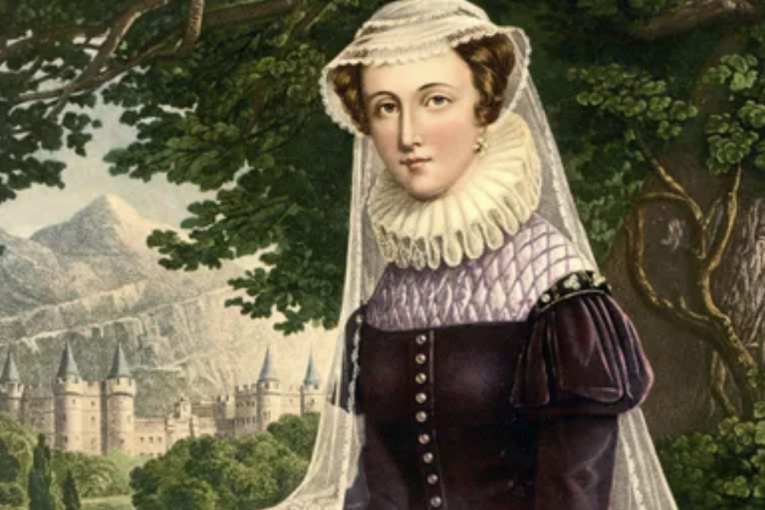
![]()

By Kayla Ngai
The Elizabethan era is fraught with so much political and religious scrutiny that continues to be a subject of interest today. Only recently, on February 23, 2023, were Mary Stuart’s (Mary, Queen of Scots) letters finally decoded.
Mary Stuart was a Catholic Queen (1542-1587) who left fifty-seven messages addressed to “ambassadors, government officials, fellow monarchs and conspirators alike” while locked up in England. Of course, these letters were mostly Stuart’s way of advocating for her freedom. Yet they also provide more insight into Mary’s “shrewd and attentive analysts of international affairs.” Thus, I want to learn more about the Queen’s plans to take back her throne. She had a lot of communication with many advisors, so it would be interesting to see her secret plots. Stuart’s own son saw her as a political rival too. I would love to learn more about the nature of their relationship from Mary’s perspective.
Dr. John Guy, a history fellow at the University of Cambridge, called this the most important “new find on Mary Queen of Scots for 100 years.” It is definitely very impressive that we have found a way to decode Stuart’s correspondences (especially since we do not know that much about the Stuarts [subjectively]). There is now more insight into secret ploys, bribes, and overall, the Queen’s lifestyle and perspective, including intriguing drama. Through these letters, there is more to uncover about the Elizabethan period, and more importantly, the intricacies of the Queen of Scots’ political involvement.
For context, Stuart spent nineteen years in captivity after losing her crown in 1567 when her court accused her of being an accomplice to Lord Darnley’s (her second husband) murder. Lord Darnley was known to be power-hungry. The Queen of Scots then fled England to seek refuge but was imprisoned by her cousin, Queen Elizabeth I of England, until her execution in 1587 for conspiring against Elizabeth I. Queen Elizabeth always felt threatened by Queen Mary because she also had a claim to the English throne, so they were not on the best of terms.
Mary Stuart’s letters were said to have been long lost. However, they were recovered in the National Library of France. It was not until amateur codebreakers (George Lasry of Israel, Norbert Biermann of Germany, and Satoshi Tomokiyo of Japan) decoded the messages in their free time that they were able to identify Stuart as the author.
The Queen of Scots adopted various tactics to keep her correspondences a secret. She utilized letter locking, a complicated paper folding technique (which researchers could not crack until 2021), and used ciphers and codes. Additionally, some human errors deterred others from figuring out that the Queen was the writer. Originally, historians thought that the letter was supposed to be in Italian because it was categorized incorrectly in the library. Yet, they noticed some French phrases (the Queen of Scots was raised in France and was married to King Francis II of France) indicating her imprisonment and the fact that she had a son. The most prominent evidence was the name Walsingham, as in Francis Walsingham (Queen Elizabeth’s spy).
Despite captivity, the Queen of Scots was able to sneak messages through her courtiers there to visit her. She conversed with many people within Queen Elizabeth’s own court. According to NPR, some of the recurring topics included Mary’s efforts to “keep her communications secure, her thoughts on the queen, her associates and alleged plots against them, negotiations about her potential release and return to the Scottish throne, complaints about her conditions in captivity and efforts to ensure her servants and allies were financially rewarded.” Stuart even complained about how she hated Robert Dudley (Queen Elizabeth’s favorite companion).
Although the news is exciting, the decoded communications are only the first step in learning more about Mary the Queen of Scots’ life. There is evidence that there are more letters that are still missing. With additional pieces to uncover, this is hopefully good news.
Currently, the codebreakers are focusing on finding more information about Stuart’s communication channels, but with a focus on handwriting, a person, or events, researchers can do a deep dive to uncover more information about her life and the political tension in Europe. However, as an English major, I read many correspondences and writing from the Early Modern period (including Queen Elizabeth I). Thus, I have an interest in this era of history and the relationships between the monarchs, and how religion played a role in Europe’s landscape. There is much to unpack and many historians will be working on these letters for a long while.